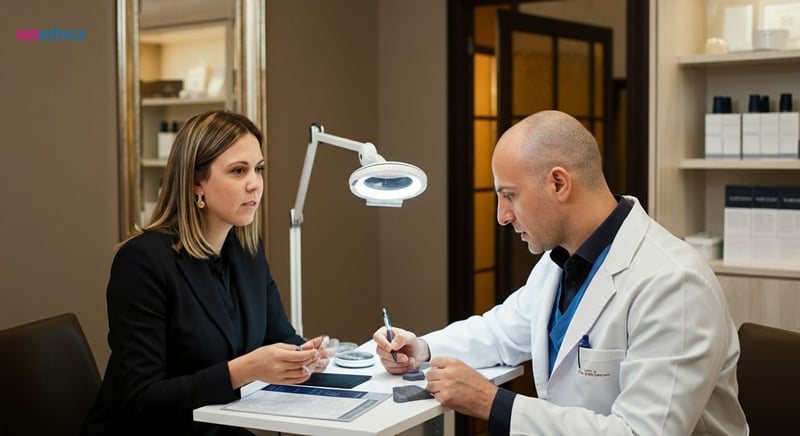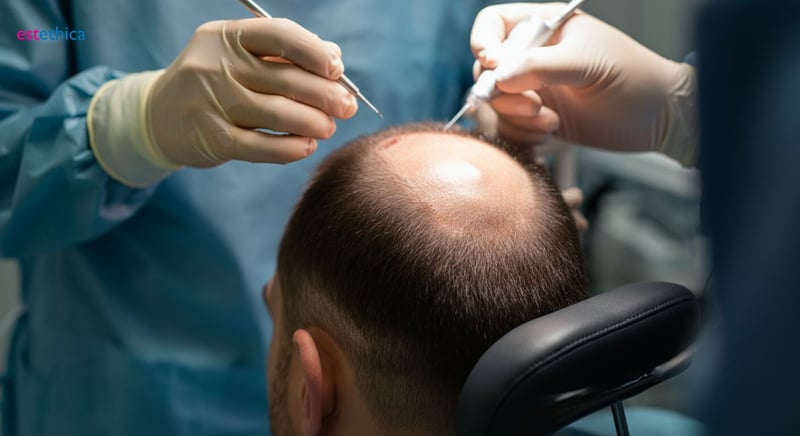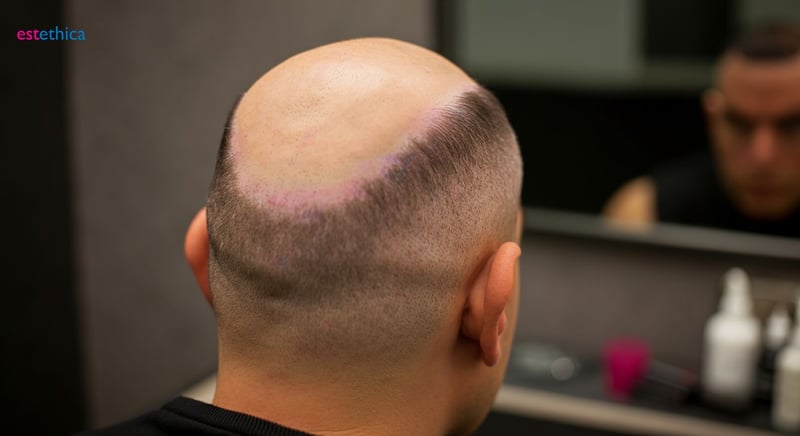Hair Transplant: Your Ultimate Guide to Hair Restoration
Explore our ultimate guide to hair transplantation, where science meets aesthetic excellence.
Welcome to our comprehensive guide on hair transplant procedures! Whether you're battling genetic hair loss or other factors contributing to hair thinning, understanding the options available in hair restoration can be life-changing. Hair transplants have become a popular solution, and with modern advancements such as Follicular Unit Extraction (FUE) and Direct Hair Implantation (DHI), the results are more natural than ever. This guide will explore the nuances of hair transplant techniques, set realistic expectations, and provide essential aftercare tips to ensure you achieve the best outcomes.
Decoding Hair Loss: Understanding the Root Causes
Genetic Predisposition and Hair Loss Treatment Options
Hair loss, or alopecia, is a common condition affecting millions worldwide. Genetics plays a significant role, particularly in cases of androgenetic alopecia, also known as male or female pattern baldness. This hereditary condition causes hair follicles to shrink over time, leading to thinner and shorter hair strands. For instance, if both parents have experienced hair loss, the likelihood of their offspring experiencing it is significantly higher. Understanding your genetic predisposition can help in early diagnosis and proactive management, including exploring options like hair transplant or medical treatments.
Hormonal Imbalances and Hair Thinning
Hormonal fluctuations can significantly impact hair health, leading to hair thinning and loss. In women, hormonal changes during menopause, pregnancy, or due to thyroid disorders can disrupt the hair growth cycle. These imbalances can cause hair follicles to enter a prolonged resting phase, resulting in shedding and reduced hair density. For men, dihydrotestosterone (DHT), a hormone derived from testosterone, is a primary culprit in male pattern baldness. DHT binds to hair follicles, causing them to shrink and eventually stop producing hair. Addressing these hormonal imbalances through medical interventions can help stabilize hair loss and promote regrowth. Early intervention and appropriate hair loss treatment can often mitigate the effects of these hormonal shifts.

FUE vs. FUT: Choosing the Right Hair Transplant Technique
Understanding FUE and FUT Techniques for Hair Restoration
When considering a hair transplant, the choice between Follicular Unit Extraction (FUE) and Follicular Unit Transplantation (FUT) is pivotal. FUE involves extracting individual hair follicles directly from the scalp, which results in minimal scarring. This method is particularly appealing for those who prefer shorter hairstyles, as it avoids the linear scar associated with FUT. On the other hand, FUT, also known as strip harvesting, involves removing a strip of scalp from which the hair follicles are then extracted. While FUT can be more suitable for extensive hair loss treatment, it typically leaves a linear scar. Innovations like Sapphire FUE and estethica’s patented Multi DHI technique are designed to enhance the natural look and density of transplanted hair.
Factors Influencing the Choice Between FUE and FUT
The decision between FUE and FUT should be based on several factors, including the extent of hair loss, the patient's lifestyle, and their aesthetic preferences. FUE is often favored by those who value minimal scarring and a quicker recovery. Statistically, about 65% of patients opt for FUE due to these advantages. However, FUT might be more appropriate for individuals requiring a large number of grafts, as it can sometimes yield a higher number of viable follicles. At estethica, the approach involves a thorough evaluation to determine the most suitable technique for each patient. The clinic considers elements like scalp elasticity, hair density, and the patient's overall health to ensure the best possible outcome. The goal is to provide a hair restoration solution that aligns with the patient's expectations and provides long-lasting, natural-looking results.

Does Hair Transplant Work? Setting Realistic Expectations
What Influences the Success of a Hair Transplant?
A hair transplant can be a transformative procedure. It's important to understand that several factors influence the success of a hair transplant, with realistic expectations being critical. While a transplant can significantly improve hair density and overall appearance, the extent of improvement varies. The degree of existing hair loss, the texture and density of the donor hair, and the surgical technique used all play vital roles. For example, someone with a small receding hairline might see near-complete restoration, while someone with extensive baldness may achieve improved coverage but not a full head of hair. Close adherence to post-operative care instructions further optimizes results.
Key Expectations and Timelines After a Hair Transplant for Hair Restoration
Understanding the timeline for results is crucial. It is important to know what to expect after the hair restoration.
- Initial Growth: Hair typically begins to grow three to six months post-transplant.
- Full Results: Complete results are usually visible after 12 to 18 months.
- Follicular Unit Extraction: It can be done with FUE hair transplant or hair grafting.
Patience and diligently following post-operative guidelines are essential for achieving the best possible outcome. Consider the recovery process in different seasons, ensuring optimal conditions based on whether it's a hair transplant recovery winter or hair transplant aftercare summer, as each season presents unique challenges and requires tailored care.

Beyond the Procedure: Essential Hair Transplant Aftercare Tips
Optimizing Recovery and Results After Hair Grafting
Effective aftercare significantly influences the success of a hair transplant. Adhering to specific guidelines minimizes complications and supports optimal healing. For example, patients should avoid direct sun exposure for at least two weeks to protect the newly transplanted follicles. Smoking and alcohol consumption should be avoided as they can impair blood flow to the scalp, hindering the healing process. Gentle washing of the hair with prescribed products is crucial to prevent infection and maintain scalp hygiene. estethica offers specialized post-operative kits designed to aid recovery, promoting better integration and growth of the transplanted hair.
Essential Post-Operative Care Tips for Hair Restoration
Following a hair restoration procedure, adhering to specific aftercare measures is essential for optimal results. One such measure involves avoiding strenuous activities. Here’s why:
- Physical Strain: Vigorous exercise can increase blood pressure, potentially disrupting the newly implanted grafts.
- Sweat Accumulation: Sweat can create a breeding ground for bacteria, increasing the risk of infection in the sensitive scalp area.
- Delayed Healing Process: Engaging in intense physical activities too soon can prolong the recovery period.
Alongside these precautions, using advanced post-operative solutions from estethica can help ensure successful hair loss treatment.
Advanced Hair Restoration with FUE, DHI, and Multi DHI Techniques
Prioritizing Patient Safety and Health with Ethical and Transparent Practices
Frequently Asked Questions
What are the main causes of hair loss that hair loss treatment can address?
What are the key differences between FUE and FUT hair transplant techniques?
How can I set realistic expectations regarding the results of a hair transplant?
What essential aftercare steps are crucial for ensuring the success of hair grafting?
Achieve your aesthetic goals with estethica's personalized treatment plans and world-class expertise.
📞 Book Your Free Consultation Today!